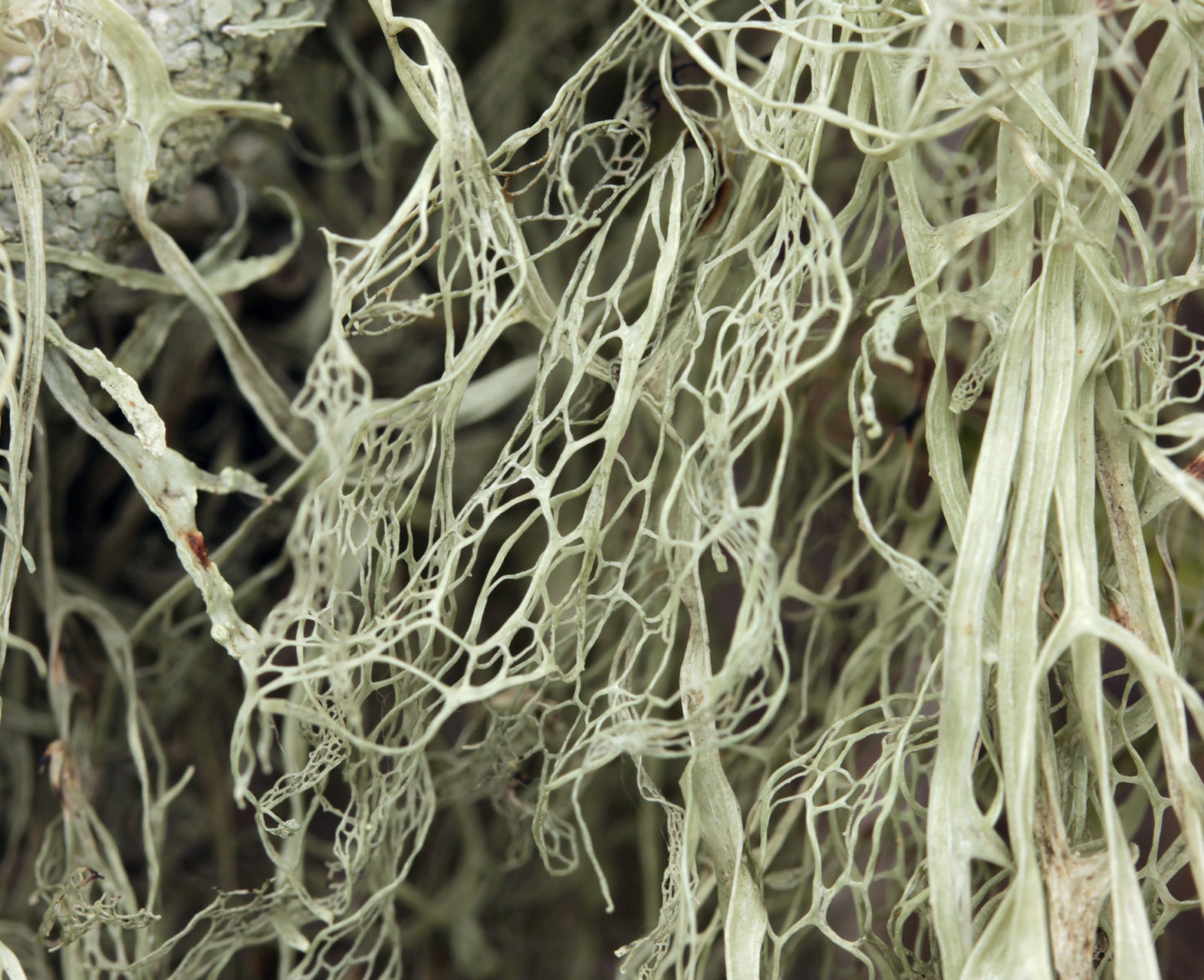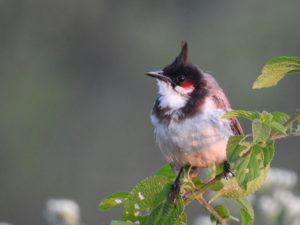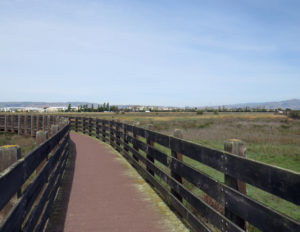It is difficult not to feel despair about the environment. Global climate change, species extinction, unregulated development, industrial pollution, loss of habitat. We know this woeful litany-turned-lament. And yet every day I spend time outside observing the birds, the bees, and the lichens. Why do something that invites despair? Won’t time in nature lead to the pain of loss being that much greater?
I have asked myself these questions, and reflected upon them when enjoying the bountiful effulgence of the natural world. I keep returning to a small incident that Robin Morgan recorded in her prescient book, The Demon Lover, when she noticed her Palestinian friend Aziza cultivating a small garden in the squalor of a refugee camp. Morgan asked, why bestow limited resources on a flower? Aziza smiled and said, “The soul—it needs to be fed, too.” “Simple yet sophisticated skills … (for) transcending” suffering and fear work because we can make connection with life itself through such practices. We remember what we are fighting for.
That vignette of love for life has remained with me ever since. It joins with other moments in my consciousness — the German revolutionary Rosa Luxemburg continuing her bird-watching while imprisoned during World War I; Margaret Fuller’s appreciation for the American Midwest that was disappearing even as she chronicled it in Summer on the Lakes: 1843; the Buddha’s enigmatic “sermon” where he silently raises a flower, leading his disciple Mahākāśyapa to smile subtly at the wisdom thus revealed. These luminescent moments point to an omnipresent immanent experience, magnified now by the power of connection through citizen-science. The poet, the mystic, the activist, and the philosopher can participate fully alongside the scientist, the taxonomist, the cataloger, and the hobbyist. Any one of us may be all of these people at once. All those parts of us need to be fed.
Earth (my personal favorite among planets) is being treated with contempt, with disregard, with oblivious apathy. Beach volleyball players kill nesting birds in Alabama. Plans for a border wall between the U.S. and Mexico slice a knife through human communities and also through significant biological corridors. The specter of nuclear war and dirty bombs leads us to fear a sudden demise of life itself, while climate change with its attendant weather-related disasters — witness our unending fire season in California — threatens us with an agonizingly slow annihilation, species blinking out to extinction one after another.
Scientists and poets, rationalists and mystics, share a terrifying enemy: this attitude of disregard for life, of disdain towards any notion of freedom other than swaggering violent individualism, a willingness to sacrifice long-term viability for short-term gains. But we can only oppose this destruction if we can articulate what we positively embrace. It is for this reason that I go outside: to bond with what I love, to know in my bones what I am striving to preserve. Naturalizing is a way to remind myself who I am in the cycle of life, with due humility rather than petulant arrogance.
We cannot save that about which we do not care. As a dedicated citizen in the citizen-science balance, when I go outside what I am doing is focusing. Attention is a form of love. I am learning, and the knowledge gained does not stop with me. I share what I know, and build it further, through platforms as varied as friendship itself, eBird, iNaturalist, being a birding field trip leader, and being a mentor. And I learn – from other naturalists, and from other living beings themselves.
In my day job, I teach comparative religious studies. Posing questions of meaning, and cultivating techniques for enhancing meaningfulness, are stock-in-trade for religious systems around the world and across history. Bracketing the truth claims and dogma of the religions, the reason they share this emphasis on meaning can be found in the logic of human life. One function we humans clearly have in the ecology of life on Earth is observation. Pattern-detection is the outstanding feature of our out-sized brains. We can make observations that are reflective and speculative, not connected to survival per se, but to the furthering of thought itself. Thus our ability to document, our ability to observe and care, even as we sink into the chaos of climate change, is a contribution that our technological age of information has amplified
In the radical brew of politics and transformation of late 1970s Boston, two thinkers simultaneously but independently coined a new term – biophilia. The radical lesbian-feminist philosopher Mary Daly, and the socio-biologist E. O. Wilson both recognized that the prevalence of necrophilia in our culture had silenced its opposite: a love for life itself. I came to know the term from both thinkers, and to prize it as a prismatic attitude towards life that I try to live every time I step outside. To be biophilic, in the broadest sense of that term, means to combine the brain and the heart, to be fully human while encountering the non-human others in nature.
The Hindu and Buddhist category of Ṣaḍāyatana posits six human senses, with the mind taken as the sixth (with its object of thought, parallel to the eye’s object of sight). I find this cosmological attitude more endearing than separation of body and mind, presupposing, as it does, embodied thought. When I am outside, all my senses come alive, including the mind. I am also aware that my aesthetic appreciation and my scientific approach are not at odds with each other: they are constituent of the outreach of mind to the sensual world.
I first immersed myself in the natural world through being a birder; with that came various plans built around “listing” – attempting to see so many birds per year, or within a state, or a county, or at a local patch, or rarity-chasing. Thus, I often took to the field with a conscious human agenda, a bird species or two that I wanted to see: my ego constructed the plan. But quite often the birds foiled and superseded my best-laid schemes. In fact, as I do more and more patch birding, and let my attention wander to other aspects of nature, I find I am happily surrendering my ego to the birds’ needs, simply detecting their presence and being warmed by that.
Now I have a new obsession: I have been struck by lichens! Seduced by their subtle beauty and infinitely varied patterns, I am now stuck puzzling out their life histories and trying to identify them to species; this is more challenging than a Sunday New York Times crossword! Lichens are teaching me about longitudinal existence through their resilience, tenacity, stubbornness, and ubiquity, their responsiveness to light, moisture, and climate, their ability to create micro eco-systems. They also show me that diversity and symbiosis go together, that synthesis can be beneficial to all parties. But preeminently the lichens demonstrate how those things we marginalize, what goes unnoticed much of the time, matters. Like Aziza with her flower in the refugee camp, life exists in the most difficult and unlikely circumstances, amidst inert rocks, clear-cut former forests, and what developers call “land-take.” Life persists, and so will those of us who love to swim in its currents.
Far from being a boutique feature of a privileged life citizen-science invites all people to be attentive to all things. In this age of information, indigenous, scientific, and poetic approaches can flourish side-by-side. But let’s say, for a moment, that we are doomed on a dying planet. Then should we not go out, if we are so condemned, doing what we do best: observing, giving loving attention, documenting, caring? If the worst of human impulses —destruction and arrogance — are destined to win out, should we not leave markers that some of us took a different path? While I remain optimistic that life will win out over hatred and contempt, I want to live a philosophy that enables my actions to make a difference whether we are watching the end or surviving a turning point. It is precisely that fierce hope that inspires flower beds in refugee camps, bird-watching in prison, and appreciation of lichen even as the EPA is being caged and declawed. While I live in a time and place when too many of my fellow human beings treat Earth with disdain, I will exist outside of that paradigm, by being outside in the natural world.




